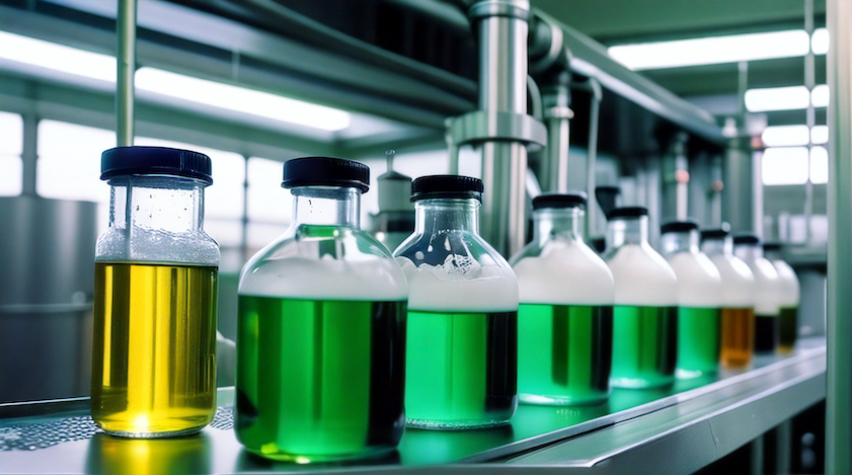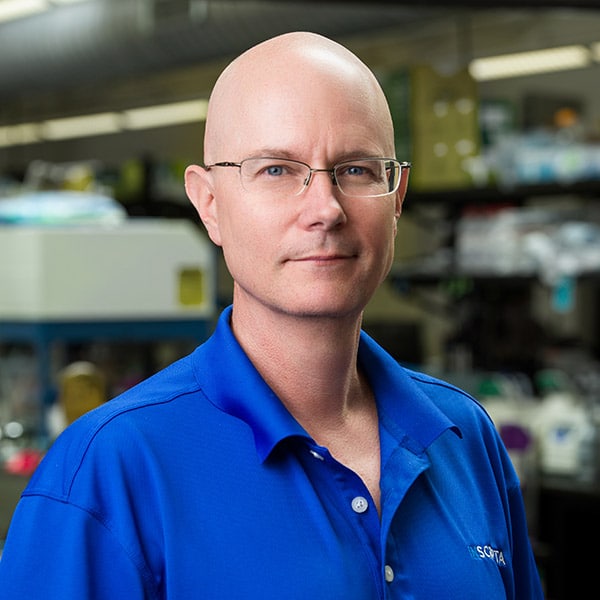
Disclosure: This post is sponsored by Inscripta and reflects their views, opinions, and insights.
Organized by AIChE’s Society for Biological Engineering (SBE), the 2024 Synthetic Biology: Engineering, Evolution & Design (SEED) Conference will be held June 24–June 27 in Atlanta, GA, USA. Covering the field from its foundations to its commercial applications, SEED’s expert-led sessions offer insights into next-generation development strategies, incorporating perspectives from research institutions and industry. Funding opportunities are available to attend this event. Reserve your spot today.
We caught up with SEED co-organizer Richard Fox, Chief Scientist at Inscripta, to discuss the future of synthetic biology.
Can we start with your perspective on the state of synthetic biology for bio-manufacturing?
There’s been tremendous excitement about the potential of synthetic biology to address some of society’s most pressing needs, including moves to augment traditional chemical manufacturing with cost-effective, consumer-driven processes. While this vision for the future has been exciting to watch develop, the industry has achieved limited commercial successes, and the full potential of the bioeconomy remains elusive. Despite all the remarkable technological developments, it still takes far too long and requires too much capital and risk to develop commercially viable biomanufacturing processes.
Why do you think it’s been so difficult to achieve greater progress?
At its core, bioengineering is incredibly difficult because we don’t understand the rules of biology the way we understand the rules in other engineering disciplines. We can’t design and engineer biological systems the way we do smart phones, airplanes, or power stations. Despite all our accumulated knowledge over the last century, we fundamentally lack the ability to engineer biology from anything like first principles. Designing systems from engineering rules and well-characterized parts was the original idea behind synthetic biology, and while that remains a laudable aspiration, it has turned out to be a limiting perspective on its own. We need new capabilities to overcome our profound ignorance.
Can you talk about what those new capabilities look like?
When I started my career in this industry 25 years ago, I was truly fortunate to be able to work in the then-nascent field of directed evolution. I didn’t have a background in the biological sciences (my formal training was in nuclear engineering), but I could immediately appreciate the difficulty of engineering biology with strictly rational approaches as well as grasp the extremely powerful and elegant way to overcome that ignorance by employing the same algorithm nature has been using to great effect for billions of years, namely, evolution. Of course, Frances Arnold went on to win the Nobel Prize in directed evolution in 2018, and for good reason. What she and many others have repeatedly demonstrated over the last several decades is that we can successfully and routinely create biocatalytic processes in ways that would otherwise be difficult to obtain using rational design principles alone.
Unfortunately, such methodological successes in the field of protein engineering have yet to significantly penetrate the field of microbial cellular engineering. There are a couple of reasons for this. First, the protein engineering and metabolic engineering communities don’t interact or cross-pollinate as much as you might expect or desire. Second, until recently, we’ve lacked the tools to precisely edit genomes in the ways we’ve been able to do with single proteins for many years. Overall, you might put cellular engineering some 10 to 20 years behind protein engineering in terms of strategies and capabilities, but the good news is that we’re poised to rapidly close that gap. With the advent of CRISPR, and the especially ultra-high throughput versions that we’ve pioneered at Inscripta, we can now run the equivalent play that has proved to be so successful for single proteins. By combining two Nobel prize winning discoveries, we can now carry out the process of directed evolution of entire genomes.
How do you see these new capabilities changing the way we engineer microbial cell factories?
I think it starts with shifting our mindset to go beyond merely what we think we know and be curious about exploring what we might consider the dark matter of the genome. Over the last several years we’ve seen numerous examples where genome-wide interventions (for example, that separately and precisely alter the expression of every gene in the genome) are important for cellular bioproduction, but are difficult to rationalize, much less predict a priori. This is the same experience we’ve had in protein engineering over the last few decades, and it’s exciting to see the same principles playing out in genome engineering.
However, it’s worth noting that we have significant challenges to overcome on the way to wider adoption. For example, it’s not sufficient to simply operate these innovative technologies in a standalone format. Organizations must also be able to conceive of and build out the suite of enabling technologies needed to fully leverage the breakthroughs in genome editing. This includes the need for an integrated technology stack that enables an accelerated Design-Build-Test-Learn cycle staffed by teams of experienced scientists and engineers who work in concert to minimize mismatches in throughput, while consistently operating with speed and efficiency to turn through as many engineering cycles in the shortest time possible. This will require the training of a new generation of biotechnology workers to realize the full potential of the technology.
What else do you see that’s needed to achieve greater success?
As a technologist at heart, I firmly believe these advancements will have a profound impact on the field, however, I don’t think they are sufficient on their own to drive the kind of success we all want to see. We need innovation on the commercial side, including business models that focus more on product market fit. There are numerous exciting technological opportunities out there, but they don’t always make good business sense. A technical lens is only one filter for evaluating opportunities. There also needs to be attractive economics at the back end and a rigorous commercial assessment of opportunities – you must be willing to part with your most cherished ideas. I’ve been guilty of pursuing ideas based on tantalizing technical interest or curiosity, so I know how hard it can be to stay disciplined. You need to have a great commercial team that can codify what success looks like, and there’s no shortcut or substitute for a thorough market analysis, including a deep understanding of what customers want or need.
What’s next? Where do you see the next wave of innovation coming from?
After spending the last 6+ years focused on harnessing the power of genome biology, I think I’m most excited about returning to my roots in protein engineering. To that end, I’m enthusiastic about the latest advancements in AI-based protein engineering. Given that enzymes are central to all bio-based production, new ways to further accelerate the process of enzyme engineering will have a significant impact on metabolic engineering output. We’ve had good success employing various forms of AI-based enzyme engineering over the last 20 years and expect the emerging capabilities to further accelerate the process. And while I think we’re unlikely to be able to design optimized enzymes fully in silico anytime soon, the latest advances in AI-driven directed evolution should make development more efficient than it was even just a few years ago. It’s been a while since we’ve seen this kind of step change, and it will be fun to see how far we can continue to push the boundaries on rapid, efficient enzyme optimization. And then there’s leveraging these types of AI-based approaches for genome engineering (especially in modeling the relationships between genotypes and phenotypes), so it’s a great time to be in the field.
Learn more about the 2024 Synthetic Biology: Engineering, Evolution & Design (SEED) Conference on June 24–June 27, and register today.

Richard Fox
Dr. Richard Fox is currently serving as Chief Scientist at Inscripta, leading the development of a revolutionary, full-stack, next-generation bio foundry.
Disclosure: This post is sponsored by Inscripta and reflects their views, opinions, and insights.


